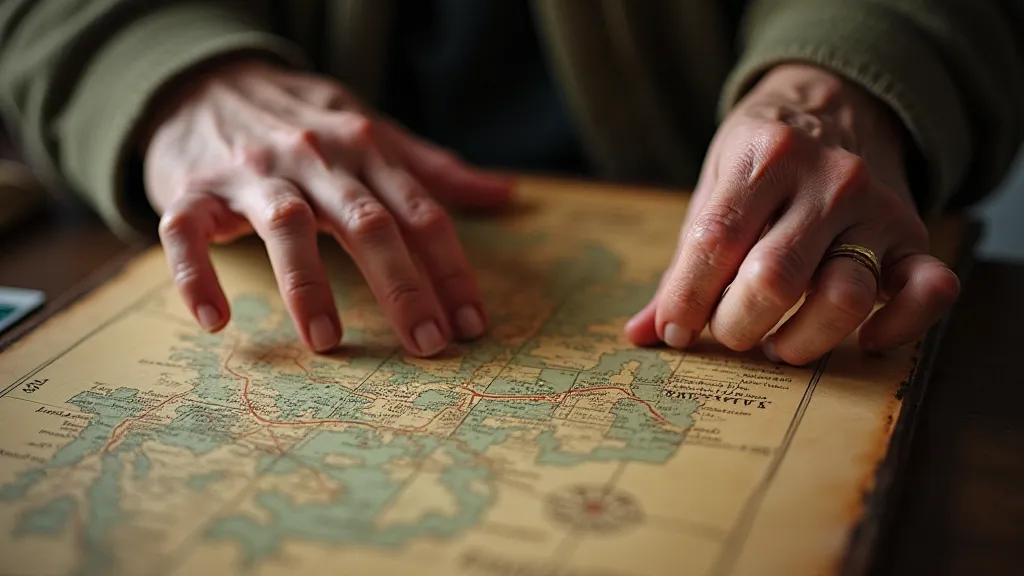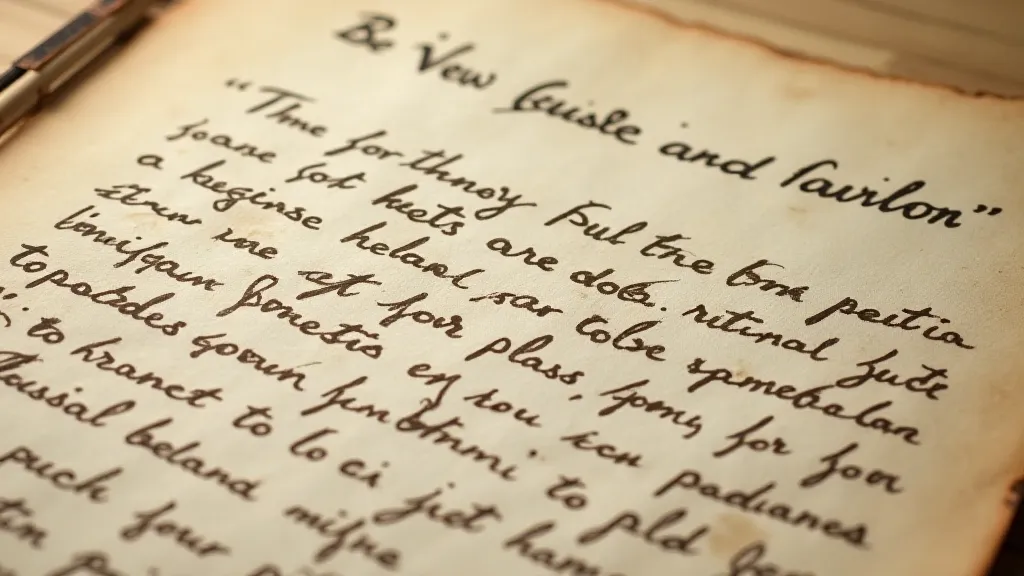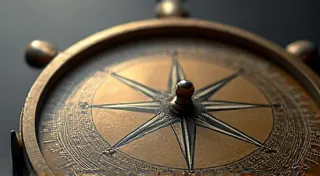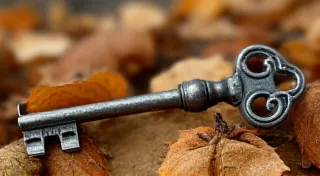Untangling the Vines: Deciphering the Origins of Obscure Dialectal Phrases
There’s a particular scent that clings to antique accordions – a blend of aged wood, dry leather, and the ghosts of countless melodies. It's a smell that transports me, instantly, to my grandfather’s workshop. He was a master craftsman, not just with accordions, but with language. He collected phrases, not just understanding their meaning, but tracking down their roots, weaving them into stories like the intricate bellows of his beloved instruments. He's the reason I’m so fascinated by regional dialects, by the way a single word can carry the weight of a history, a community, a feeling lost to the broader world.
Dialects aren't just about accents; they’re linguistic fossils, preserving snapshots of linguistic evolution. They reflect migrations, trade routes, cultural exchanges, and even the isolating effects of geography. Consider the phrase “fixin’ to.” Commonly heard throughout the Southern United States, it means “about to.” But its origin isn't quite as straightforward as it seems. Linguists trace it back to a contraction of "fixing to," itself derived from an older construction meaning "intending to." The crucial shift, the evolution from intent to imminent action, speaks volumes about the changing rhythms of Southern life – a pragmatic, immediate approach to action and expression.

The Dance of Words: Migration and Linguistic Blending
The story of language is largely the story of movement. As people migrated, their speech traveled with them, influencing and being influenced by the local vernacular. The Appalachian region, for example, has retained a remarkable amount of archaic English, a linguistic time capsule reflecting the speech patterns of the early settlers who arrived from the British Isles. Phrases like “a far piece” (meaning a long distance) or “reckon” (meaning to suppose or believe) offer direct echoes of 17th and 18th-century English. Often, the influence of geography and the close-knit nature of these communities has led to incredibly localized variations, revealing how even within a single region, there can be profound differences in how people speak. Understanding this nuance requires a deeper look at dialectal variations within a single community, a complexity often overlooked in broader discussions of regional dialects.
But it's not simply a process of preservation. Dialects are *dynamic*. They’re constantly evolving, borrowing from other languages and incorporating new expressions. The Cajun dialect of Louisiana, born from the blending of French, Spanish, and African languages, is a striking example of this process. Phrases like “cher” (dear) and “caddo” (to put, place) are readily understood, but the syntax and cadence are distinctly unique, a vibrant testament to a community forged in hardship and resilience. The judgments that others might have about these regional variations can be quite pronounced and reveal a lot about societal biases. Indeed, the alchemy of accent and how it shapes our social judgments is a topic worthy of dedicated exploration.
The Allure of the Forgotten: Phrases Lost to Time
What’s truly poignant is when phrases fade, when the communities that birthed them dwindle, and the words themselves become whispers in the wind. My grandfather used to lament the disappearance of certain phrases in his own rural Pennsylvania Dutch dialect. He’d try to keep them alive by incorporating them into his storytelling, hoping that someone, somewhere, would pick them up again. One he particularly cherished was "hüssle-ditzel" – a term for a small, inconsequential task, a minor annoyance. It’s a wonderfully evocative word, conjuring up images of tedious chores and the quiet frustration of rural life. But it's become increasingly rare to hear it used, a casualty of standardization and the homogenizing influence of mass media. This process of decline and standardization often impacts the ways people relate to the land and their livelihoods, demonstrating a fascinating link between language and agricultural practices and how those mold regional vernacular.
The decline isn't always due to external pressures. Sometimes, it’s simply a matter of generations moving on, adopting new patterns of speech, and unconsciously letting older forms slip away. My own children, growing up in a more urban environment, rarely use the more colorful expressions I learned from my grandfather. And while I cherish their fluency in modern English, a part of me mourns the loss of that connection to our linguistic heritage. It's a loss felt acutely in communities where humor and storytelling are vital threads in the fabric of life, demonstrating how these dialects used to shape the landscape of the cartography of humor within a region.
Crafting Meaning: The Art of Dialect Restoration
There’s a certain parallel between restoring an antique accordion and preserving a dying dialect. Both require patience, meticulous attention to detail, and a deep appreciation for the original craftsmanship. Just as a skilled restorer will carefully repair damaged bellows or replace worn reeds, a linguist or folklorist will painstakingly document and analyze linguistic fragments, piecing together the history of a phrase. It’s about more than just preserving words; it’s about preserving the stories, the values, and the cultural identity of a community.
The process often involves interviewing elders, recording oral histories, and analyzing historical texts. It's about more than just transcription; it’s about understanding the context in which the phrase was used, the emotions it conveyed, and the significance it held for the speaker. This requires a sensitivity to nuance, a willingness to listen deeply, and a genuine respect for the speakers’ expertise.

Collecting Fragments: Appreciating Linguistic Diversity
For those interested in preserving regional dialects, there are numerous avenues to explore. Supporting local museums and historical societies is crucial. Recording conversations with elders, with their permission of course, can provide invaluable documentation. Even simply paying attention to the language spoken around you, noticing the subtle variations and unique expressions, can contribute to a greater appreciation for linguistic diversity. One often overlooked aspect is the impact of trade and interactions on linguistic evolution, revealing how words travel and transform across geographical boundaries. The influence of neighboring communities and historical interactions often leaves indelible marks on the linguistic landscape, creating a rich tapestry of intertwined narratives.
There's a certain beauty in linguistic imperfection, in the quirks and eccentricities of regional speech. Standardized language, while useful for communication across geographical boundaries, can also stifle creativity and diminish the richness of human expression. Just as the unique timbre of an antique accordion adds character and charm, regional dialects enrich the tapestry of human language. Furthermore, standardization can sometimes lead to a loss of the vibrant oral traditions that were once central to community life, diminishing the power of storytelling and the preservation of local knowledge.
Consider the impact of globalization and media on dialectal variation. While these forces can facilitate communication and cultural exchange, they also pose a significant threat to the survival of many regional dialects. The constant exposure to standardized language through television, radio, and the internet can lead to a gradual erosion of unique linguistic features, as younger generations adopt more mainstream forms of speech. It’s a complex interplay of forces, where the desire for connection and understanding can inadvertently contribute to the homogenization of language.
The role of education in preserving and promoting dialectal diversity is also worth examining. While schools often prioritize standardized language skills, there is a growing recognition of the importance of valuing and celebrating the linguistic heritage of students. Encouraging students to speak and write in their native dialects, while also teaching them the skills necessary to communicate effectively in standardized language, can help to foster a sense of pride in their linguistic identity and to ensure that these unique forms of expression are not lost.
The responsibility for preserving these linguistic treasures falls on all of us. By listening, by documenting, and by celebrating the diversity of human expression, we can ensure that the echoes of these forgotten phrases continue to resonate for generations to come. It’s a quiet act of preservation, a way of honoring the voices of those who came before, and ensuring that their stories are never truly lost. Like the quiet hum of an antique accordion, these dialects are a vital part of our shared human heritage, waiting to be rediscovered and appreciated. The ongoing effort requires not only linguistic expertise, but also a commitment to social justice and a recognition that language is deeply intertwined with identity, culture, and power.
Consider how analyzing the history and evolution of these dialects can be a fascinating window into the larger forces shaping our world—a deeper dive can be found by reading more about the cartography of humor






